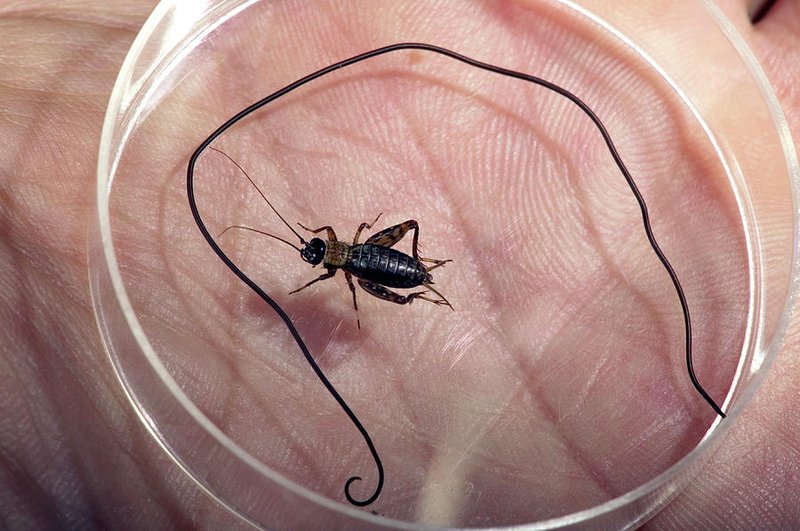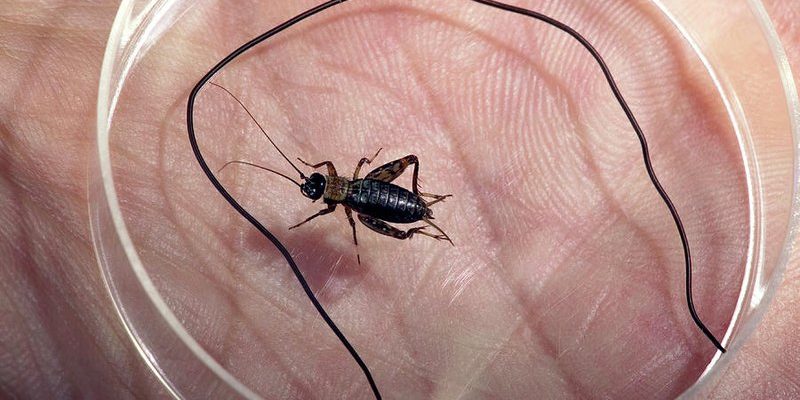
Hairworms, or Gordian worms, belong to a group of parasitic worms that can manipulate their host to fulfill their life cycle. When they grow inside their host, they often influence it to jump into water, where the worm can finally break free and continue its life. Understanding how to identify a hairworm in its natural habitat can be both curious and crucial, especially if you love exploring wetlands or streams. Let’s dive into what makes these worms so unique and how to spot them out in the wild.
What Are Hairworms?
Hairworms are long, slender invertebrates that come from the phylum Nematomorpha. They may not be the most glamorous creatures in the wild, but they play an important role in their ecosystems. Typically, they grow anywhere from a few inches to several feet long, making them look quite daunting at first glance. Their bodies are thin and segmented, often resembling spaghetti.
These fascinating worms are actually parasites. They typically inhabit host animals like grasshoppers, crickets, and other insects. Once inside, they can grow and develop, sometimes even taking control of their host’s behavior. If you’ve ever seen a grasshopper leap dramatically into water, it just might have been under the influence of a hairworm, which needs water to continue its life cycle.
You might be wondering how they get inside their hosts. Hairworms usually enter through ingestion, and once inside, they can remain dormant for a while as they grow. The whole process is a bit like a science fiction story, showcasing how interconnected life can be, even in ways that seem bizarre.
Where Do Hairworms Live?
Hairworms are primarily found in moist environments. Think of wetlands, marshes, puddles, or any place with still water. They thrive in places where their potential hosts live, which often includes a variety of insects and other small creatures. Here’s a more detailed look at their preferred habitats:
- Ponds and Streams: These bodies of water are prime locations for hairworms. The damp soil near water edges provides a perfect environment for breeding.
- Wet Meadows: Areas that stay wet for part of the year create ideal conditions for hairworms and their hosts to flourish.
- Forests After Rain: After a heavy rain, you might find hairworms in the ground or clinging to vegetation, ready to latch onto a potential host.
If you’re exploring these environments and keep an eye out for grasshoppers or crickets, you might just come across a hairworm hiding nearby, waiting for the right moment to emerge.
How to Spot a Hairworm
Identifying a hairworm in its natural habitat involves a bit of observation and patience. Here are some easy ways to spot them:
1. Look for Infected Hosts: Hairworms often manipulate their hosts to leap into water. If you see a grasshopper doing something strange, it might be worth taking a closer look. The presence of a worm can sometimes be indicated by unusual behavior.
2. Check Shallow Waters: If you’re near a pond or stream, gently disturbing the water’s surface might reveal wriggling hairworms. They can be camouflaged with debris, so keep an eye out.
3. Observe the Soil: Hairworms can also be found in moist soil or vegetation. Look for long, thin, and sometimes curled shapes that might indicate their presence.
4. Time of Year: These worms are more visible during warmer months when their hosts are active. Exploring during spring and summer will increase your chances of spotting them.
If you’re patient and observant, you’ll begin to notice the subtle signs of their presence in a variety of ecosystems.
Behavioral Signs of Hairworms
Understanding the behavior of hairworms is crucial to identifying them. Here are some key points to keep in mind:
– Host Manipulation: Once a hairworm is fully developed inside its host, it triggers strong instincts. For instance, it can compel a cricket to leap into water—a dramatic move that ensures the worm’s escape and continuation of its life cycle. Observing such behavior can provide strong clues about the presence of hairworms.
– Emergence Patterns: After some time, when the worm is ready to emerge, the host will often be seen heading toward water, where the worm can break free. You might notice a grasshopper or other host jumping into a watering hole or puddle.
– Surface Movement: When hairworms emerge from their hosts, they squirm and wiggle in the water, making for a striking sight. The movement is often erratic, which can help you recognize them when they first escape.
By being aware of these behaviors, you can sharpen your skills in identifying hairworms in the wild.
Environmental Importance of Hairworms
While hairworms might seem creepy, they actually play a vital role in their ecosystems. Here are a few points that illustrate their importance:
– Population Control: By parasitizing insects like grasshoppers, hairworms help keep these populations in check. This balancing act can prevent overpopulation, which otherwise could lead to ecosystem disruption.
– Nutrient Cycling: When hairworms consume their hosts, they contribute to nutrient cycling in the soil and water, aiding in the overall health of their environment.
– Food Source: Both emerging hairworms and their infected hosts can provide food for predators, from birds to other aquatic organisms. This creates a ripple effect through the food chain.
Recognizing the role of hairworms helps us appreciate the interconnectedness of life and the sometimes strange ways nature balances itself.
So, there you have it! Hairworms are much more than just a strange curiosity in nature; they are intriguing, complex creatures that contribute meaningfully to their ecosystems. Next time you’re exploring a wetland or pond, keep an eye out for the signs of these fascinating worms.
Whether you’re watching an insect’s behavior or looking for those telltale movements in the water, identifying a hairworm can be an exciting adventure. Remember, nature is full of surprises, and every little discovery can lead to a greater understanding of the world around us. Happy exploring!

